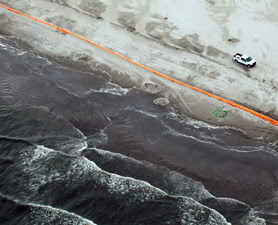Have you ever wondered where Hurricanes get their names from? Long go storms were given the names of the saints, old military phonetic alphabet names (i.e., Able, Baker, Charlie, etc.) or even just Euro-American women's names. Nowadays storms can be nicknamed not just Danielle, Laura and Teresa, but Norbert, Kiko, Omeka, Lekima or Krovanh -- to name a few formally selected by a selections on lists maintained by the World Meteorological Organization (WMO).
In the old days, the storms such as hurricanes were born and had to struck the land and make their damage, and if they were memorable enough in a heartbreaking way than they were named. For example, the “The Storm of the ‘48’’ or the “San Felipe of 1876,” these were the storms that were named because they were very memorable in a tragic way.
About six decades a go no one really had ever seen or knew much about the hurricane’s cyclopean face or the space; people used to hurricanes names that most are blinded to know the movements of the hurricanes until its usually too late. The weather satellites and the forecasting tools have made it possible to track storms; because of this fast developing technology meteorologists can give proper names to hurricanes and make hurricane warning usually before the hurricanes touches the land. As I had mentioned in the previous blogs that meteorologists and other researchers are in the Atlantic Ocean tracking hurricanes; this would not have happened if it wasn’t for the technology that we have today.

The first official proposal to name the hurricanes in the Atlantic Ocean was just right after the World War II. And that name was a military alphabet approach; it was then dropped in the 1950s in the favor of women’s names. In 1979, it was decided that the names of men and women would alternate on the alphabetical list.
There were a lot more lists, the two list the at most Americans were familiar covered the Atlantic and the East Pacific. However, there are also lists with culturally appropriate names that cover the Central North Pacific, Western North Pacific, Australian Region, Fiji Region, Papua New Guinea Region, Philippine Region, Northern and Southern Indian Ocean.
The Atlantic and East Pacific lists each have six lists of 21 alphabetical names (excluding letters Q, U, X, Y and Z), which are recycled every six years, unless a storm is so awful that its name is retired -- like Katrina, for instance. There will never be another Hurricane Katrina, Camille, Andrew, Ike or Paloma.
"Any member can request that a name be removed if there is extensive damage and/or deaths caused by a named tropical cyclone," said meteorologist Max Mayfield,
The members of the hurricane committee then simply vote on any names nominated; this process usually take a long time before the committee agree on the name change and give the hurricane the appropriate name.
This system of naming the hurricanes seemed to be working as of now; however, the question about naming the hurricane after humans comes up often and meteorologists and hurricanes specialists are often asked if naming the storm after humans is the best approach.
http://news.discovery.com/earth/hurricane-names-storms.html

























